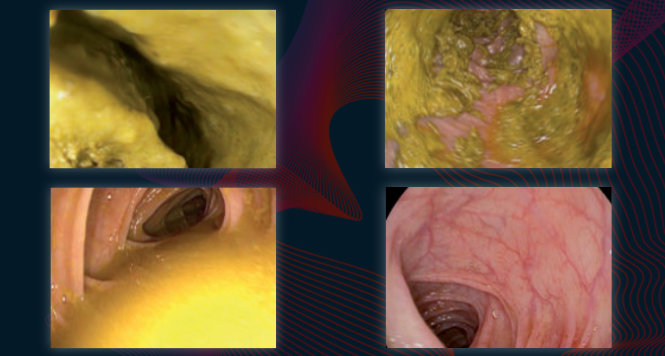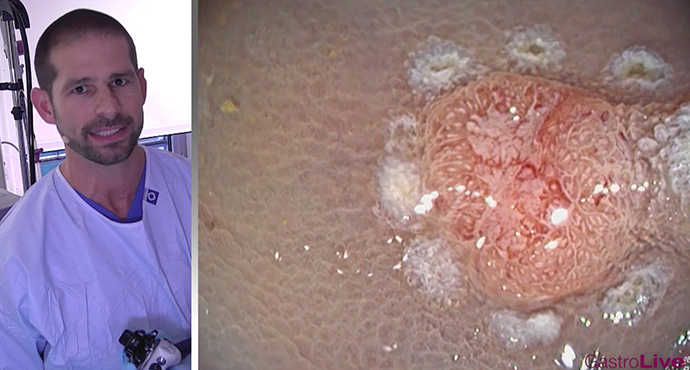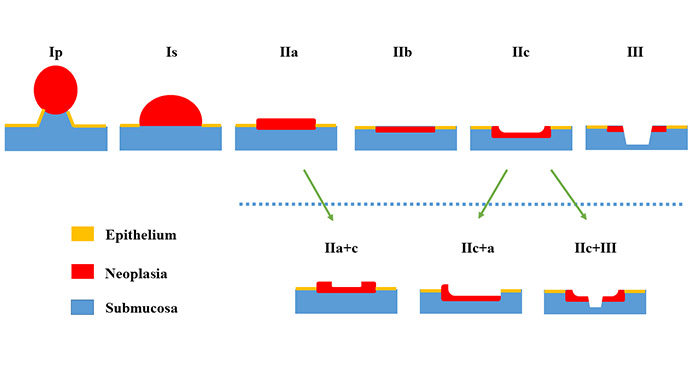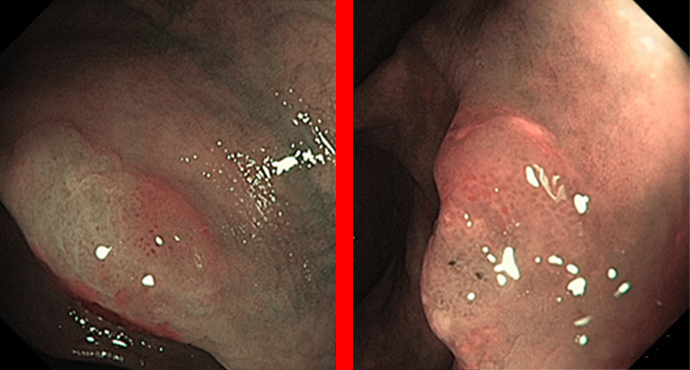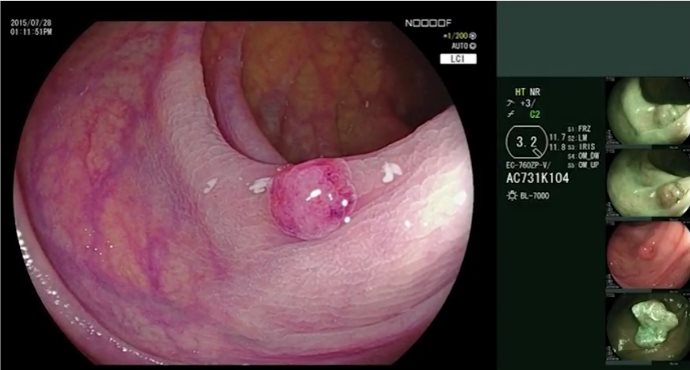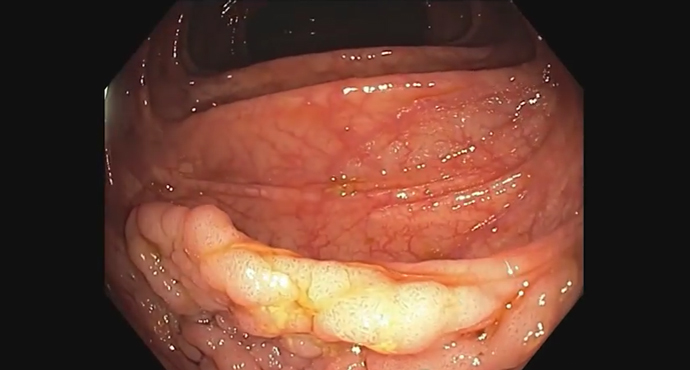Various measures introduced in recent decades have led to a reduction in the mortality rate due to colorectal carcinoma. They include screening colonoscopy.
Lower GI tract
Lower GI tract
Boston-Bowel-Preparation-Scale
Follow-up intervals after polypectomy
Follow-up intervals after polypectomy Colonoscopy is the most reliable procedure for detecting colorectal carcinomas and polyps. The aim of colonoscopy must be to achieve a
Sydney classification- assessment of deep mural injury after endoscopic mucosal resection.
Classification presented by Burgess NG et al. based on retrospective evaluation, clinical observations and image analysis. It allows for the assessment of deep mural injury
WASP classification – optical diagnosis of polyps <10mm
Recently sessile serrated lesions (SSLs) have been recognized as another important precursor lesion to CRC. SSLs are thought be responsible for 15–30% of colorectal cancer.
Chronic Inflammatory Bowel Disease: Endoscopic Scores
Chronic inflammatorey bowel disease (IBD) with ist two forms Crohns Disease (CD) and Ulcerative Colitis (UC) can be classified by various endoscopic scores with regards
Polyp Classification: BASIC
Basic (BLI Adenoma Serrated International Classification) Classification for colorectal polyp characterization with blue light imaging
Cold Snare on the Rise?
Cold snare resection has been established in diminutive polyps (up to 5 mm) as being at least as safe and partially more effective than biopsy
Artificial Intelligence and Polyp Differentiation
Polyp differential diagnosis by endoscopy has become a hot topic in the frame of the DISCARD discussion, stating that histologic analysis of small/diminutive (< 5
Fecal Transplantation in Active Ulcerative Colitis?
Disturbances of the intestinal microbiota have been linked to the pathogenesis of ulcerative colitis (UC). In active UC microbiota differs from that in healthy subjects
Full-thickness Resection in the Colon – Finally ?
For clinical cases, endoscopic full-thickness resection (EFTR) was developed and first described by Suzuki and Ikeda in 2001. It was performed in three Japanese patients
Paris Classification: Early Colorectal Cancers
The Paris classification for superficial / early tumors should be part of a standard terminology for endoscopic assessment. This classification applies to the entire gastrointestinal
Optimizing the adenoma detection rate – a never-ending story? Or does the outcome quality depend on the follow-up?
The adenoma detection rate (ADR) is the holy grail of quality assurance in colonoscopy. It is the main parameter for outcome quality — or more
Multimodal treatment approach with endoscopic full-thickness resection of a rectal carcinoma
A 77-year-old patient presented to the emergency department with Hb-relevant lower gastrointestinal bleeding during anticoagulation treatment with rivaroxaban and clopidogrel. At colonoscopy, the bleeding source
Paris Classification Early Cancer
Endoscopic treatment for early carcinoma in the gastrointestinal tract has in the meantime become evidence-based and has been incorporated into national and international guidelines
News from DDW
The latest developments in the field of gastroenterology and endoscopy are presented every year at Digestive Diseases Week (DDW) in Chicago — although in recent
The New American Guideline for Capsule Endoscopy – Too Much and Reaching Too Far?
This guidelines on capsule endoscopy was put together by 7 Canadian experts and published in a high-ranking journal. It is limited to capsule endoscopy in
Proctology, part 2 — treatment of acute anal pain
The most frequent causes of a pain-related presentation to the proctologist are anal venous thrombosis and anal fissure. Both of these conditions typically result from
Colonoscopic adenoma detection – new super wide-angle scopes versus new caps
Adenoma detection rate (ADR) has become the holy grail of colonoscopy outcome quality measurement and efforts to increase ADR are ongoing.
First Results from the NordICC randomized trial on screening colonoscopy
Screening colonoscopy is well established in a few Western countries as primary method of colorectal cancer (CRC) screening; however, most Western countries use conventional (FOBT)
Endocuff Vision® versus wide-angle endoscope: small attachment – big effect
The wide-angle colonoscope provides a field of view up to 235 degrees, thanks to a lens system featuring forward viewing (147 degrees) and also side
Polyp Classification: NICE
The NICE (NBI International Colorectal Endoscopic) Classification is based on narrow-band images of colon polyps. The classification uses staining, vascular patterns, and surface patterns to
Polyp Classification: WASP (incl. SSA)
The following gallery of images is intended to present the newly evaluated characteristics in the WASP classification, but it also illustrates the problems that still
Rectal NET Tumors
Unclear smaller polyps in the rectum may represent a pitfall — if they do not look like perfectly typical hyperplasia or small adenomas, then carcinoids
How can I identify sessile serrated adenomas?
Flat polyps are difficult to identify and may be easily overlooked, particularly in the right colon, where there is sometimes limited bowel cleansing. If a
Are difficult colon polyps still being operated on?
The current standard is that when polyps or adenomas are identified on (screening) colonoscopies, they should be either directly removed or, if not, patients should
Endoscopic diagnosis of colon polyps using the NICE classification: initial experience with BLI and LCI
The new generation of the Fujifilm electronic endoscopy system allows virtual chromoendoscopy alongside zoom endoscopy. Blue laser imaging (BLI), like narrow-band imaging (NBI), allows further
Perforation of a bleeding polypectomy site in the colon using a Hemoclip
A patient who had undergone polypectomy of a flat polyp in the ascending colon presented again with peranal hemorrhage. The polypectomy site can be seen
Proctology — part 1: diagnosis
As a therapeutic discipline, proctology belongs primarily to the field of visceral surgery. However, the diagnosis of proctologic diseases is relevant to all physicians working
Combined laparoscopic/endoscopic resection of a cecal adenoma
A 60-year-old female patient with a diagnosis of a cecal adenoma that cannot be resected endoscopically, developing out of the appendix.
Piecemeal EMR of a laterally spreading tumor (LST)
Diagnosis of a granular-type laterally spreading tumor at the right colic flexure.
Laparoscopic surgery for rectal carcinoma — slash back?
Since the early 2000s, meta-analyses based on smaller studies have shown that open and laparoscopic surgery for rectal carcinoma produce similar results.
Surveillance and treatment for dysplasia in chronic inflammatory bowel diseases
Patients with chronic inflammatory bowel disease (IBD) are at increased risk for the development of colorectal carcinomas and the corresponding precursor lesions. This applies both
Fecal DNA testing — a new threat to screening colonoscopy?
Fecal tests have increasingly moved on from the classic fecal occult blood test (FOBT) to fecal immunologic testing (FIT), particularly in countries with newly introduced
New wide-angle colonoscope — far more adenomas?
A new wide-angle colonoscope now provides a viewing angle of 330°, at least on one level, which represents practically a doubling in comparison with previous
Adenoma rate confirmed as most important quality parameter in screening colonoscopy
There has been increasing discussion regarding quality indicators in colonoscopy, and on the ways in which what parameters should be assessed and compared using benchmarking.
Duodenoscopes with problem bacteria — only in the USA?
It has long been known that bacterial infection can be transmitted via endoscopes. Review studies have shown that infections are still occurring and are usually
How dangerous are serrated adenomas?
Sessile serrated adenomas (SSAs) are the latest fashion in gastroenterological endoscopy. Individual histopathological examinations have shown that there is a separate pathway to carcinoma, apparently

